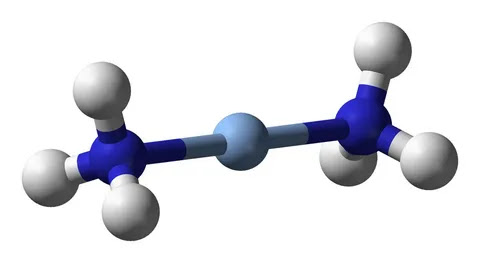Ammoniate Compound Ammonia (NH3) Contains One Nitrogen Atom and Three Hydrogen Atoms
Ammonia
Ammonia (NH3) is a chemical
molecule made up of one nitrogen atom and three hydrogen atoms. It is most
commonly found as a gas. It has a strong odour, is colourless, and is extremely
soluble in water. Ammonia is required for numerous biological activities and
acts as a precursor in the synthesis of amino acids and nucleotides. Ammonia
is naturally formed in the environment by the breakdown of organic waste stuff.
It is utilised in the industries of fertiliser, chemical, pharmaceutical, pulp
and paper, mining, fiber, and plastics. Natural gas and fuel oil are utilised
as feedstock in the manufacturing of ammonia. Ammonia is a colourless, toxic
gas with a pungent stench. It occurs naturally, mostly as a result of anaerobic
degradation of plant and animal materials, and has also been identified in
space. Some plants, primarily legumes, "fix" atmospheric nitrogen to
make ammonia in collaboration with rhizobia bacteria.
The odour of ammonia has been
known since prehistoric times. Famous chemists such as Joseph Black (Scotland),
Peter Woulfe (Ireland). Claude Louis Berthelot, a French chemist, determined
its elemental composition in 1785.Ammonia
is commercially manufactured through the catalytic reaction of nitrogen and
hydrogen at high temperatures and pressures. German chemists Fritz Haber and
Carl Bosch invented the technique in 1909. Both were awarded the Nobel Prize in
Chemistry for their contributions, although in quite different years: Haber in
1918 and Bosch in 1931. The basic Haber-Bosch method is being used today.
The majority of ammonia
production (85%) is used directly or indirectly in agriculture. Chemical
fertilisers derived from ammonia include urea, ammonium phosphate, ammonium
nitrate, and various nitrates. Other important molecules derived from ammonia
include nitric acid, hydrazine, cyanides, and amino acids. Ammonia was once a
popular refrigerant. It has mostly been superseded by chlorofluorocarbons and hydro
chlorofluorocarbons, both of which are under environmental scrutiny. Ammonia is
most commonly found in glass cleaners. Ammonia
is very soluble in water; its exact solubility varies with temperature (see
fast facts). Aqueous ammonia is also known as ammonium hydroxide, however that
molecule cannot be isolated. When ammonia is utilised as a ligand in
coordination complexes, it is referred to as "ammine."
Ammonia is derived from fossil
fuels and hence is not a "green" product, despite its extensive use
in agriculture. However, environmentally friendly ammonia may be on the horizon
if the hydrogen is produced through other ways, such as wind or solar-powered
water electrolysis. Ammonia can be used as a fuel in conventional engines.
According to a study conducted by the catalyst business Haldor Topsoe (Kongens
Lyngby, Denmark), replacing traditional ship fuels with green ammonia would be
cost-effective and eliminate a large source of greenhouse gases. It has the
potential to be employed in aircraft fuels as well. Ammonia could be combined
with conventional fuels during the transition period.




Comments
Post a Comment